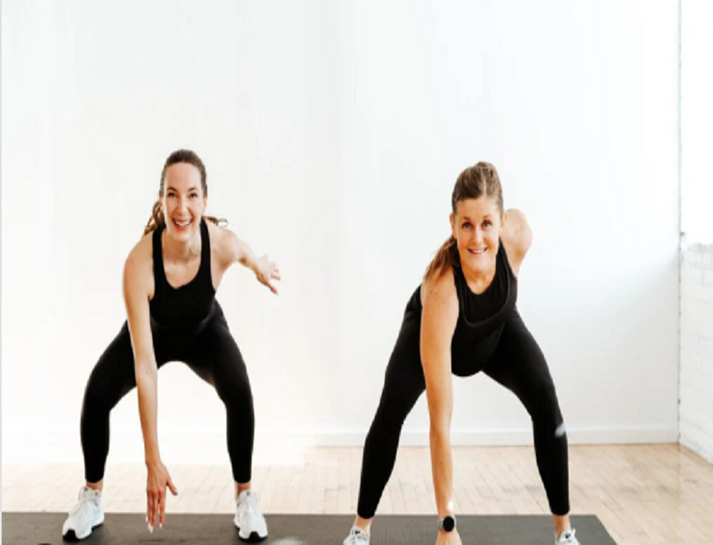What Is The Best Low Impact Exercise?
In today's fast-paced world, maintaining a healthy lifestyle can be a daunting task. However, incorporating low-impact exercises into your routine can be a game-changer. These exercises are gentle on your joints and muscles, reducing the risk of injury while still providing numerous benefits. Whether you're recovering from an injury, managing a chronic condition, or simply looking to adopt a more sustainable fitness regimen, low-impact exercises are an excellent choice.
Benefits of Low Impact Exercise
Low-impact exercises offer a plethora of advantages that make them an attractive option for individuals of all ages and fitness levels. Firstly, they are gentle on your joints, minimizing the stress and strain on your knees, hips, and ankles. This makes them an ideal choice for those with joint issues or those recovering from injuries. Additionally, low-impact exercises can improve cardiovascular health, increase flexibility, and promote weight management without putting excessive strain on your body.
What is the Best Low Impact Exercise?
While there is no one-size-fits-all answer to this question, certain low-impact exercises stand out for their effectiveness and versatility. The key is to find an activity that aligns with your fitness goals, preferences, and physical abilities. By exploring various options, you can discover the best low-impact exercise that resonates with you and keeps you motivated on your fitness journey.
How to Choose the Right Low Impact Exercise for You
Selecting the right low-impact exercise can be a personal journey, influenced by factors such as your age, fitness level, physical limitations, and personal preferences. Here are some considerations to keep in mind:
- Assess your fitness goals: Are you aiming to improve cardiovascular health, build strength, increase flexibility, or achieve a combination of these objectives? Different low-impact exercises cater to different goals, so it's essential to identify your priorities.
- Consider your physical abilities and limitations: If you have any pre-existing conditions or injuries, consult with a healthcare professional or a certified fitness trainer to ensure that the exercise you choose is appropriate and safe for you.
- Evaluate your personal preferences: Do you prefer indoor or outdoor activities? Do you enjoy group settings or prefer exercising alone? Factoring in your preferences can help you find an exercise routine that you genuinely enjoy and are more likely to stick with.
- Experiment and be open-minded: Don't be afraid to try different low-impact exercises until you find the one that resonates with you. It's common to go through a trial-and-error process before discovering the perfect fit.
Popular Low Impact Exercises
Walking
One of the simplest and most accessible low-impact exercises is walking. It's a fantastic way to improve cardiovascular health, boost metabolism, and strengthen your muscles without putting excessive strain on your joints. Walking can be done indoors or outdoors, making it a versatile option for any weather condition or location.
Swimming
Swimming is an excellent low-impact exercise that provides a full-body workout while minimizing the risk of injury. The buoyancy of water reduces the impact on your joints, making it an ideal choice for those with joint issues or those recovering from injuries. Additionally, swimming can improve cardiovascular fitness, build strength, and promote relaxation.
Cycling
Whether you prefer indoor cycling classes or outdoor bike rides, cycling is a low-impact exercise that offers numerous benefits. It's gentle on your joints, improves cardiovascular health, and can be adjusted to suit various fitness levels. Cycling is also a great way to explore scenic routes and enjoy the outdoors.
Yoga
Yoga is a mind-body practice that combines physical postures, breathing exercises, and meditation. It's a low-impact exercise that can improve flexibility, strength, balance, and stress management. With various styles and levels of difficulty, yoga can be tailored to suit individuals of all ages and fitness levels.
Pilates
Pilates is a low-impact exercise that focuses on strengthening the core muscles, improving posture, and promoting overall body awareness. It incorporates a series of controlled movements that engage multiple muscle groups simultaneously, providing a full-body workout without excessive strain on your joints.
Low Impact Exercise for Different Age Groups
Low-impact exercises can be beneficial for individuals of all ages, but it's crucial to consider age-specific considerations and adapt the exercises accordingly.
- Children and Teenagers: For this age group, low-impact exercises can help develop coordination, flexibility, and a positive attitude towards physical activity. Age-appropriate activities like dancing, playground games, and beginner yoga or Pilates classes can be enjoyable and beneficial.
- Adults: Adults can benefit from a wide range of low-impact exercises, such as brisk walking, cycling, swimming, and strength training with resistance bands or light weights. These exercises can help maintain cardiovascular health, build muscle strength, and promote overall well-being.
- Older Adults: As we age, low-impact exercises become increasingly important to preserve joint health and prevent injuries. Activities like tai chi, water aerobics, and gentle yoga can improve balance, flexibility, and overall functional mobility.
Low Impact Exercise Tips for Beginners
If you're new to low-impact exercises, it's essential to start slowly and gradually increase the intensity and duration of your workouts. Here are some helpful tips for beginners:
- Start with a warm-up: Begin each session with a gentle warm-up to prepare your muscles and joints for the upcoming activity. This can include light stretching, walking, or gentle movements.
- Listen to your body: Pay attention to any discomfort or pain during the exercise, and adjust or stop if necessary. Low-impact exercises should not cause excessive strain or discomfort.
- Stay hydrated: Drink plenty of water before, during, and after your workout to maintain proper hydration levels and support your body's recovery process.
- Incorporate rest days: Allow your body adequate time to recover by scheduling rest days or active recovery days, such as light stretching or gentle walking.
- Consider seeking guidance: If you're new to exercise or have specific health concerns, consider working with a certified fitness instructor or physical therapist to ensure proper form and safety.
Creating a Low Impact Exercise Routine
To maximize the benefits of low-impact exercises, it's essential to create a well-rounded routine that incorporates various activities and targets different muscle groups. Here are some tips for creating an effective low-impact exercise routine:
- Set realistic goals: Define your fitness goals, whether it's improving cardiovascular health, building strength, or increasing flexibility. This will help you tailor your routine accordingly.
- Incorporate variety: Mix and match different low-impact exercises to keep your routine engaging and challenge your body in different ways. This can include a combination of cardio, strength training, and flexibility exercises.
- Schedule your workouts: Establish a consistent exercise schedule that fits your lifestyle and commitments. Consistency is key to seeing results and making exercise a habit.
- Gradually increase intensity: As you become more comfortable with the exercises, gradually increase the intensity, duration, or resistance to continue challenging yourself and promoting progress.
- Allow for rest and recovery: Remember to incorporate rest days or active recovery days into your routine to prevent overuse injuries and allow your body to recover and adapt to the exercises.
Equipment and Gear for Low Impact Exercise
While many low-impact exercises can be performed with minimal or no equipment, having the right gear can enhance your workout experience and promote safety. Here are some essential items to consider:
- Comfortable clothing: Invest in breathable, moisture-wicking fabrics that allow for a full range of motion and keep you comfortable during your workouts.
- Supportive shoes: Depending on the exercise, you may need shoes with proper cushioning and support to protect your joints and prevent injuries.
- Exercise mat: For activities like yoga or Pilates, a non-slip exercise mat can provide a stable surface and cushioning for your joints.
- Resistance bands or light weights: These can be used for strength training exercises, adding resistance and challenging your muscles without excessive impact.
- Fitness tracker or smartwatch: Tracking your progress can be motivating and help you adjust your routine as needed. Many fitness trackers and smartwatches offer valuable insights into your heart rate, steps, and calorie burn.
Tracking Your Progress with Low Impact Exercise
Monitoring your progress is crucial to ensure that your low-impact exercise routine is effective and helping you achieve your desired goals. Here are some ways to track your progress:
- Keep an exercise log: Record the type of exercise, duration, intensity, and any notable observations or challenges. This log can help you identify patterns and make adjustments as needed.
- Take progress photos or measurements: Periodically take progress photos or body measurements to track changes in your physical appearance and body composition.
- Assess your fitness levels: Regularly assess your fitness levels by tracking metrics such as distance covered, weights lifted, or flexibility improvements. This can provide tangible evidence of your progress.
- Monitor your overall well-being: Pay attention to changes in your energy levels, sleep quality, and overall mood. Low-impact exercises can positively impact various aspects of your well-being.
- Seek professional guidance: Consider working with a certified fitness professional or health coach who can provide personalized assessments, guidance, and feedback on your progress.
Common Mistakes to Avoid in Low Impact Exercise
While low-impact exercises are generally safe and gentle, there are still some common mistakes that can lead to injury or hinder your progress. Here are some pitfalls to avoid:
- Improper form: Maintaining proper form is crucial to prevent injury and maximize the effectiveness of the exercise. If you're unsure about the correct form, seek guidance from a qualified instructor or trainer.
- Overexertion: Low-impact exercises should be challenging but not excessively strenuous. Pushing yourself too hard can lead to injury or burnout.
- Lack of progression: While low-impact exercises are gentle, it's important to gradually increase the intensity or duration to continue challenging your body and promoting progress.
- Neglecting warm-up and cool-down: Skipping the warm-up and cool-down phases can increase the risk of injury and hinder your body's recovery process.
- Ignoring discomfort or pain: If you experience persistent discomfort or pain during or after an exercise, it's important to listen to your body and adjust or stop the activity accordingly.
Conclusion: Embrace a Healthier Lifestyle with Low Impact Exercise
Low-impact exercises offer a safe and effective way to improve your overall health and well-being without putting excessive strain on your body. By exploring various options, such as walking, swimming, cycling, yoga, and Pilates, you can find an exercise routine that aligns with your fitness goals, preferences, and physical abilities.
Remember, the key to success with low-impact exercises is consistency, proper form, and gradual progression. Start slowly, listen to your body, and seek guidance from professionals if needed. Embrace a healthier lifestyle by incorporating low-impact exercises into your routine and experience the numerous benefits they have to offer.


